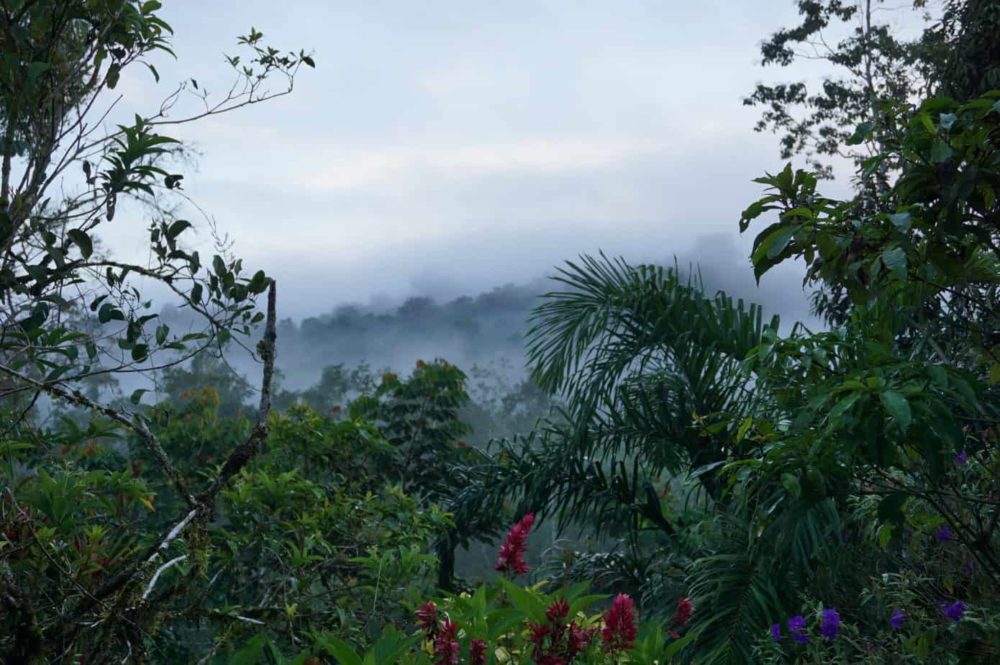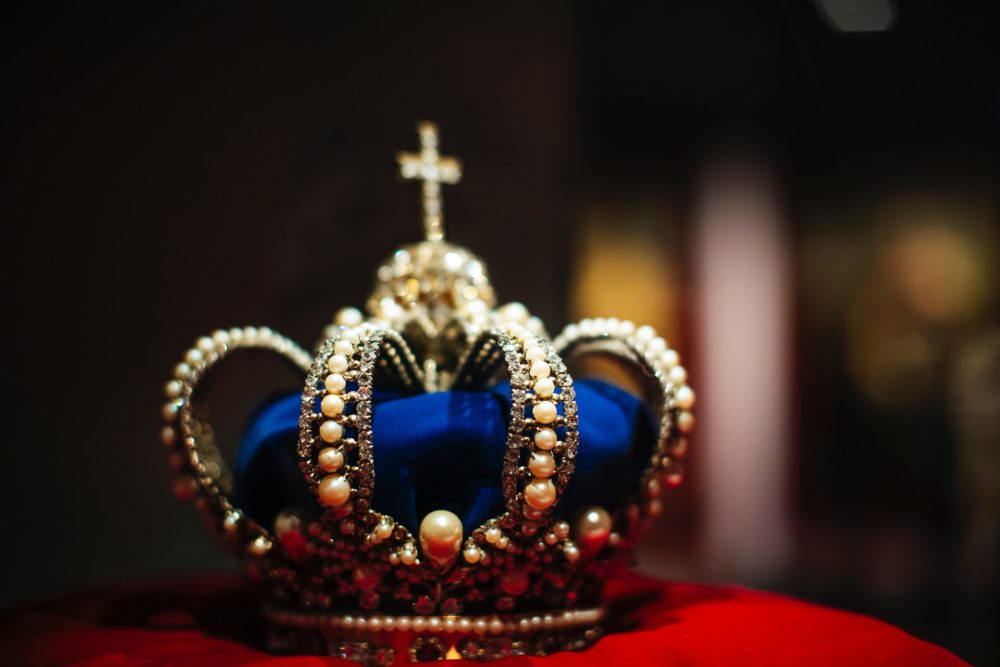The UN Sustainable Development Goals are 17 goals for sustainable development. In these, the United Nations have set themselves the goal of fighting global poverty by 2030, protecting the planet and creating peace and prosperity for all. And while these goals may sound a bit utopian, we also want to do our utmost in the chocolate area to get a small step closer to the goals. How? Find out here!
What sounds like a band name (also a good idea ;-) ) should describe our work with the UN goals more precisely. Because we don't just touch on the SDGs, they are in a way intertwined with everything we do at Theyo. Instead of 99 problems, we focus on 8 solutions that we have firmly integrated into our work. Ultimately, "we" means above all: our chocolate manufacturers, who we select according to these criteria and who are particularly convincing due to their high degree of transparency! How do we focus on the SDGs together? Here we go:
End poverty in all forms, everywhere
The first goal of the Sustainable Development Goals is also at the top of our priority list! Because: Poverty is the main reason for the widespread child labor and child slavery in the chocolate sector. And that's exactly why fair wages, long-term contracts and a lot of transparency are essential!
In the chocolate sector this means:
Different dimensions of poverty are considered in the direct trade in cocoa beans. Many cooperatives with which we work our chocolate manufacturers give their farmers much more than just an income. They set up further training, support them in the post-harvest process and in quality assurance. This, in turn, is also financed by higher revenues. Poverty can only be permanently reduced and child labor prevented through a holistic approach!
Most of the world's food comes from small farmers. Paradoxically, it is these same farmers who are often the most vulnerable to starvation. It is therefore necessary to empower farmers and enable them to live a dignified life so that they in turn can live food security and sustainable agriculture.
In the chocolate sector this means:
The makers of our chocolates source cocoa beans directly from farmers and cocoa cooperatives and pay prices well above production costs. The advantage? This way they are not affected by fluctuating commodity prices. Since these are often smallholders, a fall in world prices can lead directly to famine. Thanks to fair prices and subsidized training programs, whole families can be fed. In addition, farmers can operate more sustainably, which is ultimately better for the environment and enables more stable incomes.
Fair and direct trade helps promote gender equality. In cocoa farming in particular, it is far too often the case that farmers own and manage the cocoa plantations while the women of the family have to do the hard work. Fair organizations are increasingly working with plantations and cooperatives where women are given a voice.
In the chocolate sector this means:
Organizations such as ' Uncommon Cacao ' work to combat discrimination against women by working specifically with women farmers. Many of our partner chocolate manufacturers work with 'uncommon cocoa' and recognize the important role of women in agriculture.
Child labor and child slavery are the opposite of decent work. According to current studies, more than 1.5 million (!) children work on cocoa plantations in West Africa alone, sometimes even as abducted slaves. Direct trade counteracts this by paying higher wages and, above all, by creating the greatest possible transparency.
In the chocolate sector this means:
As already mentioned in goal 1: higher wages are the most important tool to combat child labor and enable decent work. Farmers can only feed their families and their children can go to school instead of working if they receive reasonable prices for their crops. That's why direct trade with fair prices and long-term relationships is the top priority for us and our chocolate partners in crime!
While chocolate is being sold at cheap prices in western countries, farmers and children in cocoa-producing countries have to suffer for it. The consumers are not to blame for this – as is so often claimed. But above all, multimillion-dollar corporations, which depress cocoa prices and at the same time make high profits. In short: there is a lot of inequality here, which we would like to counteract with our range of chocolates .
In the chocolate sector this means:
Resolving these inequalities is one of our absolute core concerns! Our range consists - with seasonal fluctuations - of around 50% original chocolate. What does that mean? Single origin chocolates, in our definition, chocolates that are produced directly in the country of origin of the cocoa. We source chocolate from manufacturers like MIA directly from Madagascar , chocolate from Latin America and even chocolate directly from the Philippines. The big advantage lies in the fact that a large part of the sales ends up directly in the local communities. In this way, a functioning and sustainable economy can be established on site.
Our chocolate partners from Western countries not only pay far above Fairtrade standards, but also see the local farmers as partners, not as resources. You work with them and rely on their expertise in post-harvest, drying and fermentation. In the case of the large chocolate corporations, small farmers are often only viewed as cheap producers of raw materials, all further steps are implemented by the companies or their importers. This of course means that extremely low prices reach the smallholders. Instead of empowering them, their bad position in the supply chain is also radically exploited.
Even if chocolate is part of every balanced diet in our opinion, chocolate is and was actually a luxury good. Once loved by empresses and kings, the world of chocolate has gotten into serious trouble as a result of industrialisation. Eat less chocolate! From our point of view, there is no getting around a way back to more quality instead of quantity.
In the chocolate sector this means:
Our chocolate range is not only full of fair and sustainable chocolates, the chocolates are made from fine cocoa beans and are therefore super tasty and aromatic. Fair fine flavor cocoa beans have their price and that's why we focus on class instead of mass! Last but not least, in our chocolate tastings, we recommend reaching for high-quality chocolate with real cocoa butter and less sugar. Then enjoy it appropriately and you will have something of it for much longer. In addition, the farmers are paid appropriately for their products, they in turn can farm more sustainably, which in turn has a positive impact on the environment. A win-win situation!
While entire rainforest areas are being cleared for cocoa trees in West Africa in order to open up new fertile areas, there are agroforestry cocoa cultivation areas, some of which even save relevant amounts of CO2. In addition, people in cocoa regions are particularly badly affected by global warming.
In the chocolate sector this means:
While industrially manufactured chocolate often comes with cocoa from monocultures that were grown on cleared land, the situation is often different with fine chocolate. At Theyo, we take a particularly close look at the way cocoa is grown. We only source chocolates that come with cocoa beans from permaculture or agroforestry. Many of our partner manufacturers also support tree planting campaigns or have their cocoa beans shipped to Europe by wind power. Everyone has in common that we try to create a positive impact wherever we can.
With certain cultivation systems, cocoa farmers can protect the environment of animals, strengthen biodiversity and support soil fertility. Fair trade and long-term contracts can enable farmers to make their cocoa cultivation more sustainable and ecological.
In the chocolate sector this means:
When buying chocolate, we not only pay attention to the taste (sorry not sorry ;-) ), but also take a particularly critical look at the supply chains. Do the cocoa beans come from direct trade and are they grown in mixed cultures? Do they perhaps come from agrofort systems that are home to rare animal species? And is it even old cocoa varieties that are given new life through processing? If one or more of these aspects apply, then the chocolates make it into our range after extensive tasting rounds in the team. You can find our curated tasting boxes here ...
Would you like to learn more about fair and sustainable chocolate? Then do a sustainable team event with us! Or take a look at whichchocolate tastings we have coming up at the moment. We look forward to seeing you!
Theyo & the Sustainable Development Goals
What sounds like a band name (also a good idea ;-) ) should describe our work with the UN goals more precisely. Because we don't just touch on the SDGs, they are in a way intertwined with everything we do at Theyo. Instead of 99 problems, we focus on 8 solutions that we have firmly integrated into our work. Ultimately, "we" means above all: our chocolate manufacturers, who we select according to these criteria and who are particularly convincing due to their high degree of transparency! How do we focus on the SDGs together? Here we go:
Goal 1: No poverty!
End poverty in all forms, everywhere The first goal of the Sustainable Development Goals is also at the top of our priority list! Because: Poverty is the main reason for the widespread child labor and child slavery in the chocolate sector. And that's exactly why fair wages, long-term contracts and a lot of transparency are essential!
In the chocolate sector this means:
Different dimensions of poverty are considered in the direct trade in cocoa beans. Many cooperatives with which we work our chocolate manufacturers give their farmers much more than just an income. They set up further training, support them in the post-harvest process and in quality assurance. This, in turn, is also financed by higher revenues. Poverty can only be permanently reduced and child labor prevented through a holistic approach!
Goal 2: No hunger
End hunger, achieve food security and improved nutrition, and promote sustainable agricultureMost of the world's food comes from small farmers. Paradoxically, it is these same farmers who are often the most vulnerable to starvation. It is therefore necessary to empower farmers and enable them to live a dignified life so that they in turn can live food security and sustainable agriculture.
In the chocolate sector this means:
The makers of our chocolates source cocoa beans directly from farmers and cocoa cooperatives and pay prices well above production costs. The advantage? This way they are not affected by fluctuating commodity prices. Since these are often smallholders, a fall in world prices can lead directly to famine. Thanks to fair prices and subsidized training programs, whole families can be fed. In addition, farmers can operate more sustainably, which is ultimately better for the environment and enables more stable incomes.
Goal 5: Gender Equality
Achieve gender equality and empower all women and girlsFair and direct trade helps promote gender equality. In cocoa farming in particular, it is far too often the case that farmers own and manage the cocoa plantations while the women of the family have to do the hard work. Fair organizations are increasingly working with plantations and cooperatives where women are given a voice.
In the chocolate sector this means:
Organizations such as ' Uncommon Cacao ' work to combat discrimination against women by working specifically with women farmers. Many of our partner chocolate manufacturers work with 'uncommon cocoa' and recognize the important role of women in agriculture.
Goal 8: Decent work and economic growth
Promote lasting, inclusive and sustainable economic growth, productive full employment and decent work for allChild labor and child slavery are the opposite of decent work. According to current studies, more than 1.5 million (!) children work on cocoa plantations in West Africa alone, sometimes even as abducted slaves. Direct trade counteracts this by paying higher wages and, above all, by creating the greatest possible transparency.
In the chocolate sector this means:
As already mentioned in goal 1: higher wages are the most important tool to combat child labor and enable decent work. Farmers can only feed their families and their children can go to school instead of working if they receive reasonable prices for their crops. That's why direct trade with fair prices and long-term relationships is the top priority for us and our chocolate partners in crime!
Goal 10: Fewer inequalities
Reduce inequality within and between countriesWhile chocolate is being sold at cheap prices in western countries, farmers and children in cocoa-producing countries have to suffer for it. The consumers are not to blame for this – as is so often claimed. But above all, multimillion-dollar corporations, which depress cocoa prices and at the same time make high profits. In short: there is a lot of inequality here, which we would like to counteract with our range of chocolates .
In the chocolate sector this means:
Resolving these inequalities is one of our absolute core concerns! Our range consists - with seasonal fluctuations - of around 50% original chocolate. What does that mean? Single origin chocolates, in our definition, chocolates that are produced directly in the country of origin of the cocoa. We source chocolate from manufacturers like MIA directly from Madagascar , chocolate from Latin America and even chocolate directly from the Philippines. The big advantage lies in the fact that a large part of the sales ends up directly in the local communities. In this way, a functioning and sustainable economy can be established on site.
Our chocolate partners from Western countries not only pay far above Fairtrade standards, but also see the local farmers as partners, not as resources. You work with them and rely on their expertise in post-harvest, drying and fermentation. In the case of the large chocolate corporations, small farmers are often only viewed as cheap producers of raw materials, all further steps are implemented by the companies or their importers. This of course means that extremely low prices reach the smallholders. Instead of empowering them, their bad position in the supply chain is also radically exploited.
Goal 12: responsible consumption and production patterns
Ensure sustainable consumption and production patternsEven if chocolate is part of every balanced diet in our opinion, chocolate is and was actually a luxury good. Once loved by empresses and kings, the world of chocolate has gotten into serious trouble as a result of industrialisation. Eat less chocolate! From our point of view, there is no getting around a way back to more quality instead of quantity.
In the chocolate sector this means:
Our chocolate range is not only full of fair and sustainable chocolates, the chocolates are made from fine cocoa beans and are therefore super tasty and aromatic. Fair fine flavor cocoa beans have their price and that's why we focus on class instead of mass! Last but not least, in our chocolate tastings, we recommend reaching for high-quality chocolate with real cocoa butter and less sugar. Then enjoy it appropriately and you will have something of it for much longer. In addition, the farmers are paid appropriately for their products, they in turn can farm more sustainably, which in turn has a positive impact on the environment. A win-win situation!
Goal 13: Measures to protect the climate
Take urgent action to combat climate change and its impactsWhile entire rainforest areas are being cleared for cocoa trees in West Africa in order to open up new fertile areas, there are agroforestry cocoa cultivation areas, some of which even save relevant amounts of CO2. In addition, people in cocoa regions are particularly badly affected by global warming.
In the chocolate sector this means:
While industrially manufactured chocolate often comes with cocoa from monocultures that were grown on cleared land, the situation is often different with fine chocolate. At Theyo, we take a particularly close look at the way cocoa is grown. We only source chocolates that come with cocoa beans from permaculture or agroforestry. Many of our partner manufacturers also support tree planting campaigns or have their cocoa beans shipped to Europe by wind power. Everyone has in common that we try to create a positive impact wherever we can.
Goal 15: Life on land
Protect, restore and promote sustainable use of terrestrial ecosystems, sustainably manage forests, combat desertification, halt and reverse land degradation and halt biodiversity lossWith certain cultivation systems, cocoa farmers can protect the environment of animals, strengthen biodiversity and support soil fertility. Fair trade and long-term contracts can enable farmers to make their cocoa cultivation more sustainable and ecological.
In the chocolate sector this means:
When buying chocolate, we not only pay attention to the taste (sorry not sorry ;-) ), but also take a particularly critical look at the supply chains. Do the cocoa beans come from direct trade and are they grown in mixed cultures? Do they perhaps come from agrofort systems that are home to rare animal species? And is it even old cocoa varieties that are given new life through processing? If one or more of these aspects apply, then the chocolates make it into our range after extensive tasting rounds in the team. You can find our curated tasting boxes here ...
Would you like to learn more about fair and sustainable chocolate? Then do a sustainable team event with us! Or take a look at whichchocolate tastings we have coming up at the moment. We look forward to seeing you!



